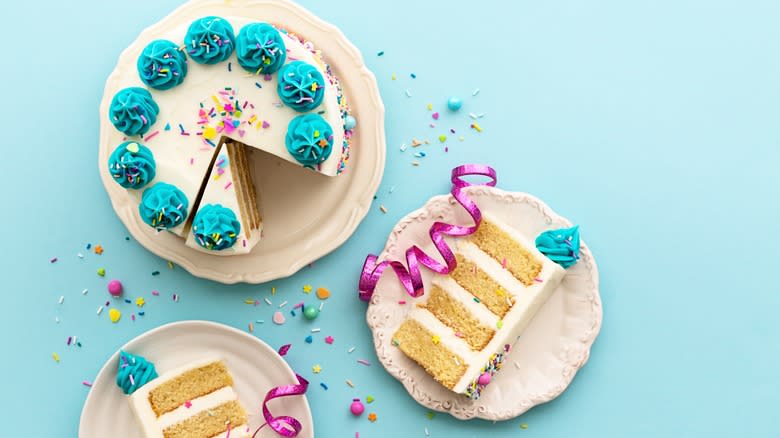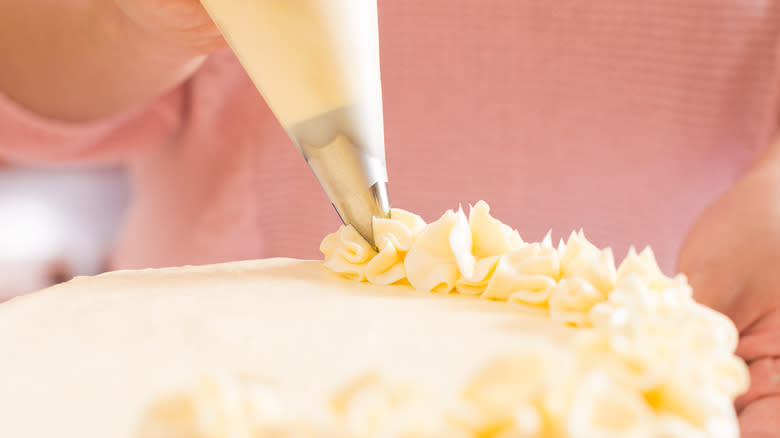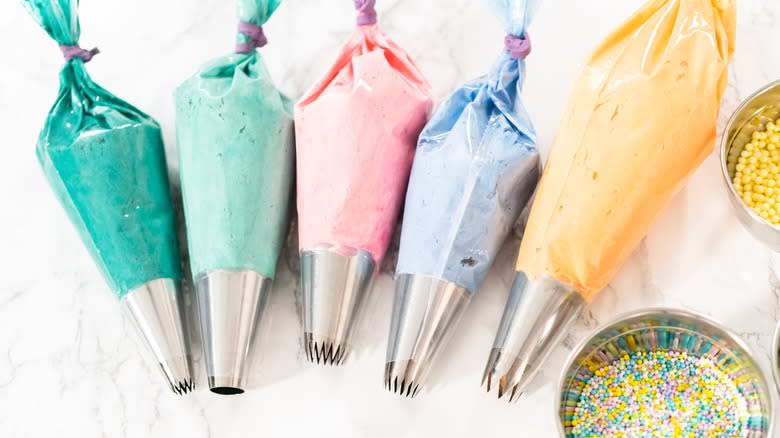For A Perfectly Piped Cake, Avoid The Edges

Cakes are a delicious treat for any occasion, even those that are undecorated. But there's no question that a beautifully decorated cake with piped frosting stands out among others and makes a gorgeous centerpiece. Run even the most basic web search, and you'll be met with a host of techniques, tips, and guidelines for making sure you're able to decorate a cake like a pro. Regardless of which technique you're using, remember a simple trick, and you'll have greater success: Pipe your designs slightly towards the middle of your cake rather than right on the edges.
Though piping on the edge of the cake may seem like the proper way to decorate it, moving just a touch inward prevents the piped frosting from slipping down the sides and falling off the cake. Giving yourself those few centimeters of wiggle room makes all the difference; the results are just as beautiful, with less of a chance of frosting-falling disaster.
Read more: Cake Hacks Every Baker Will Wish They Knew Sooner
Why Frosting Falls

What causes roses, swirls, and other designs to fall off the side of a cake? Gravity works against these piped lumps of frosting, causing them to slide down the slippery sides of a cake, making a mess in the process. But beyond gravity, there are a few other reasons why frosting might lose its seat on your cake's edge.
Temperature can also play a role, especially if you're piping using buttercream, one of the most popular types of frosting used in cake decoration. If the ambient temperature in the room is too hot, the buttercream can start to melt, causing it to become limp and droop — and, subsequently, fall. High humidity can also cause this to occur.
Or, in some cases, the cake simply isn't level enough. A slumped, domed, leaning, or otherwise unlevel cake provides an uneven surface that frosting can struggle to stick to. Use a serrated knife to carefully cut your cake layers, especially the top one, so everything stacks and lays evenly, and nothing ends up slipping overboard.
More Tips For Frosting Success

When it comes to piping frosting, truly, location is key. But there are plenty of other tips and tricks to ensure the most beautiful outcome possible when piping your next cake. One important step that many experienced bakers will encourage is freezing your cake before frosting.
This not only cools down the temperature of the cakes to prevent melting, but it also keeps the cakes firm and stops crumbs from flaking off into the frosting as you work. After cooling the cake layers completely at room temperature, wrap and freeze them for an hour, though you can keep them frozen for up to a month. You can also freeze your crumb coat for a short amount of time, 10 to 15 minutes, once you've applied it.
Another tip: Don't store your cake for too long after decorating it. Ideally, you want to eat that cake the same day it's decorated; if you plan on serving it later date, wait until then to pipe anything intricate. Following these tips will keep those piped peaks intact and lead to a dazzling dessert for all.
Read the original article on Daily Meal.